Facelift in Mexico City
Search and Compare the Best Clinics and Doctors at the Lowest Prices for Facelift in Mexico City

Find the best clinics for Facelift in Mexico City
With Medijump you can browse 2 facilities offering Facelift procedures in Mexico City. The cheapest price available is $2,632 in Mexicali
Facelift in Mexico
Price: $ 2,632
Facelift in Mexicali
Price: $ 2,632
Facelift in Guadalajara
Price: $ 3,029
Thailand offers the best prices Worldwide
Price: $ 28
Cirplast Plastic Surgery, located in Alvaro Obregon, Mexico City, Mexico offers patients Facelift procedures among its total of 29 available procedures, across 1 different specialties. The cost of a Facelift procedure starts from $6,141, whilst the national average price is approximately $4,569. All procedures and treatments are undertaken by just a small team of specialists, with 2 in total at the Clinic, and they are not accredited by any recognized accreditations institutes
From 10 verified reviews
Valeria Rodríguez, 15 February 2020
Good experience, very good medical care, clean facilities, in waiting room cubrebocas they give you what I think is excellent to prevent disease within the hospital
Compare Before & After Photos of _procedure_photos.phpFacelift


Front view


Half-side view


Full-side view
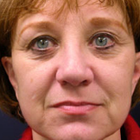
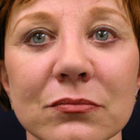
Front view

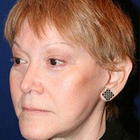
Half-side view
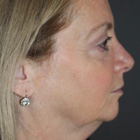

Full-side view

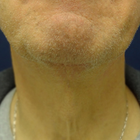
Front view
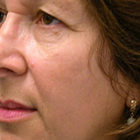
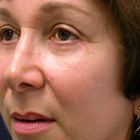
Half-side view
WHY US?
At Medijump, we're making medical easy. You can search, compare, discuss, and book your medical all in one place. We open the door to the best medical providers worldwide, saving you time and energy along the way, and it's all for FREE, no hidden fees, and no price markups guaranteed. So what are you waiting for?

Free

Best Price

Widest Selection

Risk-Free
What you need to know about Facelift in Mexico City

A facelift, also referred to as rhytidectomy, is a cosmetic surgery that aims to restore a more youthful facial appearance. It can reduce sagging or folds of skin on the cheeks, jawline, and other areas in the face that changes shape due to aging.
As we age, our skin loses their elasticity and become looser. Fat deposits also decrease in some areas and increase in others. This leads to sagging and wrinkles. With a facelift, these problems can be addressed by lifting and tightening the sagging facial tissue. The procedure may involve removing excess skin that’s causing “jowls”, smoothing out wrinkles or folds, and tightening facial tissue. It can also have a rejuvenating effect on the areas below the eyes and the deep lines from the corners of the mouth to the sides of the nose.
It is important to bear in mind that a facelift is not a treatment for creases around the nose, superficial wrinkles, and irregularities in skin color. It also cannot stop the aging process or change your fundamental appearance.
Although there are newer and less invasive facial rejuvenation procedure, a surgical facelift is still one of the most popular today. This is because the procedure offers the most dramatic results.
What is the cost of Facelift in Mexico City?
Many people take into account the cost of a Facelift in Mexico City very carefully because it differs greatly from one area or clinic to another. But the typical price normally includes the surgeon's fee, the facility fee, the cost of anaesthesia, and any required pre-operative diagnostics. The complexity of your case, the surgeon's experience, and his or her reputation all have a role in the procedure's ultimate cost, which is important to keep in mind. Remember that these expenses are an investment in your self-worth and personal fulfilment and could have a big impact on your quality of life.
What does a Facelift Procedure Involve?
In terms of aesthetics, your surgeon will recommend the best choice for your own comfort. You may
There are three types of incision used in a facelift, which depends on the degree of change you would like to see and the technique your surgeon will use.
- A traditional facelift incision starts at your temples in the hairline, continues around the ear and ends in behind your neck in the lower scalp. An incision may also be made under your chin to improve the look of the neck.
- A limited incision is shorter than traditional facelift incision. It starts in your hairline just above the ear, continues around the ear but does not extend to the lower scalp.
- Neck lift incisions begin in front of the earlobe, continues around your ear into the lower scalp. This type of incision addresses the sagging jowls, fat accumulation under the chin, and loose neck skin.
In general, your surgeon elevates the skin and tighten the underlying tissues and muscles after making an incision. Fat in your face and neck may be removed, sculpted, or redistributed. Then, the incision is stitched.
How Long Should I Stay in Mexico City for a Facelift Procedure?
You should be able to leave the hospital on the same day of the surgery if local anesthetic is used. However, if the surgery is done under general anesthetic, you may need to stay in the hospital for about 1 to 2 days. You should plan to stay in Mexico City for around 7 to 10 days following the surgery because you will have to attend follow-up checkups. During the checkups, your surgeon will monitor your healing and remove your stitches.
What's the Recovery Time for Facelift Procedures in Mexico City?
While recovering, it is beneficial to prop your head up and refrain from any heavy-duty tasks. Healthy eating habits and effective stress control can remarkably assist in your recuperation journey. A complete healing span could last for a few months, during which the puffiness slowly eases off and the cut marks become less noticeable. Diligently adhering to the post-surgery guidelines from your doctor and consistently showing up for all scheduled check-ups can contribute to a swift, seamless recovery.
Expect to experience bruising, swelling, and some discomfort for the first 3 to 5 days. You may be able to return to work and some light activities within 7 to 14 days, but avoid any vigorous activities for about 5 to 6 weeks. It may take 2 to 3 months until your face feels normal in terms of texture and sensibility.
What sort of Aftercare is Required for Facelift Procedures in Mexico City?
Your surgeon will provide detailed post-operative instruction. To avoid any complications and maximize the result, you need to follow all instructions closely. You may have to avoid any clothing that is pulled over the head, such as t-shirts and sweaters. You should also avoid using makeup and direct sun exposure for about three weeks, as well as coloring, bleaching, or perming your hair for six weeks following the surgery.
To maintain the results of your facelift, you need to avoid smoking, use sunblock, moisturize your face daily, maintain weight stability, follow a healthy diet plan, exercise regularly, and live a generally healthy lifestyle.
What's the Success Rate of Facelift Procedures in Mexico City?
Approximately 80% to 90% of people who had a facelift is reported to achieve a positive result after their procedure. However, although great results are expected after a facelift, there can be no guarantee. In some cases, you may need more than one surgery to achieve your desired result. To make sure your surgery is successful; you need to ensure your surgeon is skilled and experienced. You also have to follow your surgeon’s instructions, from the preparation to the aftercare.
Note that the results of a facelift are not permanent because no cosmetic procedure can stop aging. Your facial skin may begin to droop again as you age. The average facelift lasts between 7 and 10 years before you have aged enough to need additional work.
Are there Alternatives to Facelift Procedures in Mexico City?
If you do not want to (or cannot) undergo a facelift, you can opt for an alternative.
- Mini-facelift - a less invasive procedure that also aims to lift the wrinkles and sagging skin in the lower part of the face. Because it involves a smaller, s-shaped incision around the ear, it cannot address neck sagging or excess skin.
- Botox - it reduces the appearance of wrinkles and usually takes about 24 to 72 hours to take effect. A botox injection uses botulinum toxin to temporarily paralyze muscle activity.
- Fillers - unlike botox, fillers fill the line, crease, or the general facial area with different kinds of substances. These fillers can be used as “volumizers”, plumping and lifting your cheeks, jawline, and temple.
- Laser Skin Resurfacing - this works to give you a younger-looking facial skin by removing some skin layer by layer. Patients can get rid of scars, wrinkles, acne marks, and blotches.
- Ultherapy - this uses ultrasound to heat targeted tissue under the surface of your skin. The heat will then trigger the natural production of collagen. This procedure can be repeated 6 to 12 months because collagen usually takes very long to develop.
- LED - light-emitting diode therapy uses a variety of different colored lights to target various parts of your face. This is a pain-free procedure that treats acne, fine lines, wrinkles, pigmentations, acne scars, and rosacea.
What Should You Expect Before and After the Procedure
Before having the Facelift, you will meet with your surgeon to discuss your goals and what you expect to accomplish. Your medical history will be carefully reviewed at this meeting to ensure that the procedure is safe for you. Before the surgery, you might also need to get some routine health screenings to make sure you're in good health overall.
Expect to have bandages applied to your surgical wounds following the Facelift, and it's possible that a drain may be installed to collect extra fluid. Swelling and bruising are normal postoperative side effects, but these should progressively go away over a few weeks.
What are the Potential Risks of Facelift?
As with other surgical procedures, a facelift can carry some possible risks and complications, which may include:
- Hematoma
- Scarring and skin loss
- Hair loss
- Nerve injury (temporary or permanent changes in facial sensation or difficulties in moving facial muscles)
Some of these risks can be managed with appropriate care and medication. However, you need to be aware of the long term and permanent complications. While they are rare, they may alter your appearance significantly.
Whilst the information presented here has been accurately sourced and verified by a medical professional for its accuracy, it is still advised to consult with your doctor before pursuing a medical treatment at one of the listed medical providers
No Time?
Tell us what you're looking for and we'll reachout to the top clinics all at once
Enquire Now

Popular Procedures in Mexico City
Prices Start From $108

Prices Start From $1,945

Prices Start From $672

Prices Start From $275

Prices Start From $108

Recommended Medical Centers in Mexico City for Facelift

- Interpreter services
- Translation service
- Religious facilities
- Medical records transfer
- Medical travel insurance
- Health insurance coordination
- TV in the room
- Safe in the room
- Phone in the room
- Private rooms for patients available

- Interpreter services
- Translation service
- Religious facilities
- Medical records transfer
- Medical travel insurance
- Health insurance coordination
- TV in the room
- Safe in the room
- Phone in the room
- Private rooms for patients available

- Interpreter services
- Translation service
- Religious facilities
- Medical records transfer
- Medical travel insurance
- Health insurance coordination
- TV in the room
- Safe in the room
- Phone in the room
- Private rooms for patients available

- Interpreter services
- Translation service
- Religious facilities
- Medical records transfer
- Medical travel insurance
- Health insurance coordination
- TV in the room
- Safe in the room
- Phone in the room
- Private rooms for patients available

- Interpreter services
- Translation service
- Religious facilities
- Medical records transfer
- Medical travel insurance
- Health insurance coordination
- TV in the room
- Safe in the room
- Phone in the room
- Private rooms for patients available

- Interpreter services
- Translation service
- Religious facilities
- Medical records transfer
- Medical travel insurance
- Health insurance coordination
- TV in the room
- Safe in the room
- Phone in the room
- Private rooms for patients available

- Interpreter services
- Translation service
- Religious facilities
- Medical records transfer
- Medical travel insurance
- Health insurance coordination
- TV in the room
- Safe in the room
- Phone in the room
- Private rooms for patients available
Facelift in and around Mexico City
About Mexico City
Mexico City is the capital of Mexico and is the largest and populated city with a population of around 9 million, whereas the greater metropolitan area has around 21.2 million.
Mexico City is not only the political, administrative, and financial center of Mexico but also a major center for medical tourism within the country. It is a popular destination for affordable and quality medical care for many US and Canadian citizens and recently has started to attract Europeans and some Asian medical.
The City offers health care facilities and procedures at international standards and at a fraction of the cost when compared to the US and other countries. According to the Ministry of Health in Mexico, the competitive cost of medical care in the country allows an average saving of about 50% to 70% in various treatments and surgical procedures, and with the added benefit of small waiting times.
Mexico City offers state-of-the-art medical care in Cosmetic and Plastic Surgery, Cardiology, Orthopaedic, fertility treatments, and dental procedures. It has many famous hospitals with well-trained and board-certified doctors, and advanced medical equipment. Medica Sur, Hospital Espagnol, and Hospital Angeles, Dentalia Mexico City, and Ortopedia DF are some renowned hospitals and clinics in Mexico City. They have private rooms with all modern facilities and offer high standards of nursing care and the hospital staff all speak good English, which makes communication very easy.
Popular Areas in Mexico City
The City is located in the valley of Mexico and is surrounded by Mountains and two stunning snow-covered volcanoes, Popocatepetl and Iztaccihuatl tower above it. Though the city is very large, most of the popular attractions are in the historic city center, ‘Centro Historico de la Ciudad’. This is a 5.8 square mile UNESCO World Heritage site that has more than 14,000 important structures from the 16th to 19th Century.
Some important landmarks to visit in Mexico City are –
- Zocalo – The Constitution Square is right at the heart of the city. It measures around 240 meters in each direction and is the largest square in the world. The three major tourist attractions, the National Palace, the Metropolitan Cathedral, and the Templo Mayor dominate this area.
- The National Palace –is the official seat of power of the President and is situated on the east side of the Zocalo, The combination of history, beautiful architecture, and the best Diego Rivera murals in Mexico City make it a must-visit destination.
- Mexico City Metropolitan Cathedral – Made out of basalt and grey sandstone, this structure rests on top of the old Aztec temple precinct. It is one of the oldest and largest churches in the western hemisphere. Its prominent features are the bell towers and the statues of Faith, Hope, and Charity on the Clock Tower.
- Templo Mayor – It comprises the remains of the Great Temple of Tenochtitlan (of the Aztec period). It includes the finely sculpted circular disc which is more than three meters in diameter and weighs eight-and-a-half tons.
- The National Museum of Anthropology – One of the famous museums in the world and is in Chapultepec Park. It is very prominent due to the large monolithic figure at its entrance. It has a vast and impressive collection of archaeological discoveries and information about the life of the contemporary Indian inhabitants of Mexico.
The Palace of Fine Arts, Chapultepec Park, National History Museum, and Paseo de la Reforma and the Angel of Independence are other important landmarks of the city.
Weather and Climate in Mexico City
Mexico City has a subtropical climate because of its location in the high plateaus. It experiences mild and pleasant weather throughout the year. Summers are warm and winters are mild. The annual average temperature is 64°F. The temperature does not vary much throughout the year but the warmest month is May and the coldest is January. The average maximum temperature in summer is 77°F and the average winter temperature is 45°F.
The average annual rainfall of Mexico City is high at 33.31 inches (846.0 mm). June to September is the rainy season, with July being the wettest month. During the summer, there can be a few spells of rain.
The City has dry periods from January to April and November to December. February is the driest month of the year.
Getting Around in Mexico City
You can reach Mexico City by flying into Mexico International Airport which is known as Benito Juarez International Airport. It is the busiest airport in Mexico and serves many airlines. The major Mexican airlines Aeromexico and Aeromexico Connect operate flights to many Latin American cities and domestic and international destinations from this airport. Many American Carriers also have direct flights to Mexico City. Domestic carriers like Interjet and Volaris also operate out of the airport, connecting Mexico City to other domestic cities. The other airport in the city, Licenciado Adolfo Lopez Mateos International Airport (TLC) services low-cost domestic airlines.
There are many bus operators that offer bus service from US cities to Mexico City. The City also offers a well-planned transportation system to get around in which is the metro system, the downtown rail, light rail, normal buses, BRT (bus rapid transport), minibusses, and trolleybuses. Public transportation is very cost-effective and efficient, but can also be very crowded.
If you don’t want to travel by public transport, then you can choose Uber and other private taxi services. They are a bit more expensive but are stress-free.
Tourist Visas in Mexico City
Foreign Nationals wanting to enter Mexico must get a visa in advance unless they belong to any of the 67 eligible visa-exempt countries like the United States, UK, Canada, and Australia, or one of the three Electronic Authorization System eligible countries. Mexico also offers visa exemption to the people of any nationality who have a valid visa from the US, UK, Canada. They can travel to Mexico with their valid passports and can stay for up to 180 days.
However, citizens of countries like India, Russia, China, Sri Lanka, and many other countries need to apply and get a visa in advance to travel to Mexico for tourism.
Additional Information
- The currency used in Mexico City is the national currency of Mexico, the Mexican Peso (MXN). You can exchange your national currency for Pesos at any of the banks, or at Foreign Exchange Bureaus. The currency value of one US dollar is 18.84 MXN. You can also use your debit, credit, and travel cards in the city.
- Mexico City has all the major national and international banks. In such a large city, there are no shortages of ATMs.
- Spanish is the language widely spoken in Mexico City. Nahuatl, Otomi, Mixtec, Zapotec, and Mazahuaare are other commonly spoken indigenous languages. Due to the large expat population, English is also popular in the city.
- The family community is an important aspect of Mexican life. The locals are very conscious of their responsibilities towards their family members.
- Catholic Christianity or Roman Catholicism is the major religion in Mexico City. 83% of the population follow this religion.
- You will find the City celebrating Mexican holidays, both historic and religious throughout the year. Some of the important holidays are the –
- Constitution Day – First Monday of February
- Benito Juarez Day – Third Monday in March
- Independence Day – September 16
- Revolution Day – Third Monday in November
- Navidad (Christmas) – December 25
Popular Searches
- Plastic Surgery in Thailand
- Dental Implants in Thailand
- Hair Transplant in Thailand
- Breast Augmentation Thailand
- Gastric Sleeve in Thailand
- Gender Reassignment Surgery in Thailand
- Laser Hair Removal in Bangkok
- Botox in Bangkok
- Dermatology in Bangkok
- Breast Augmentation in Bangkok
- Coolsculpting in Bangkok
- Veneers in Turkey
- Hair Transplant in Turkey
- Rhinoplasty in Turkey
- Stem Cell Therapy in Mexico
- Rhinoplasty in Mexico
- Liposuction in Mexico
- Coolsculpting in Tijuana
- Rhinoplasty in Korea
- Scar Removal in Korea
- Gastric Sleeve in Turkey
- Bone Marrow Transplant in India
- Invisalign in Malaysia
- Plastic Surgery in the Dominican Republic
- Tummy Tuck in the Dominican Republic
- Plastic and Cosmetic Surgery in Poland
- Rhinoplasty in Poland
- Hair Implant in Poland
- Dental Implants in Poland
- IVF in Turkey
